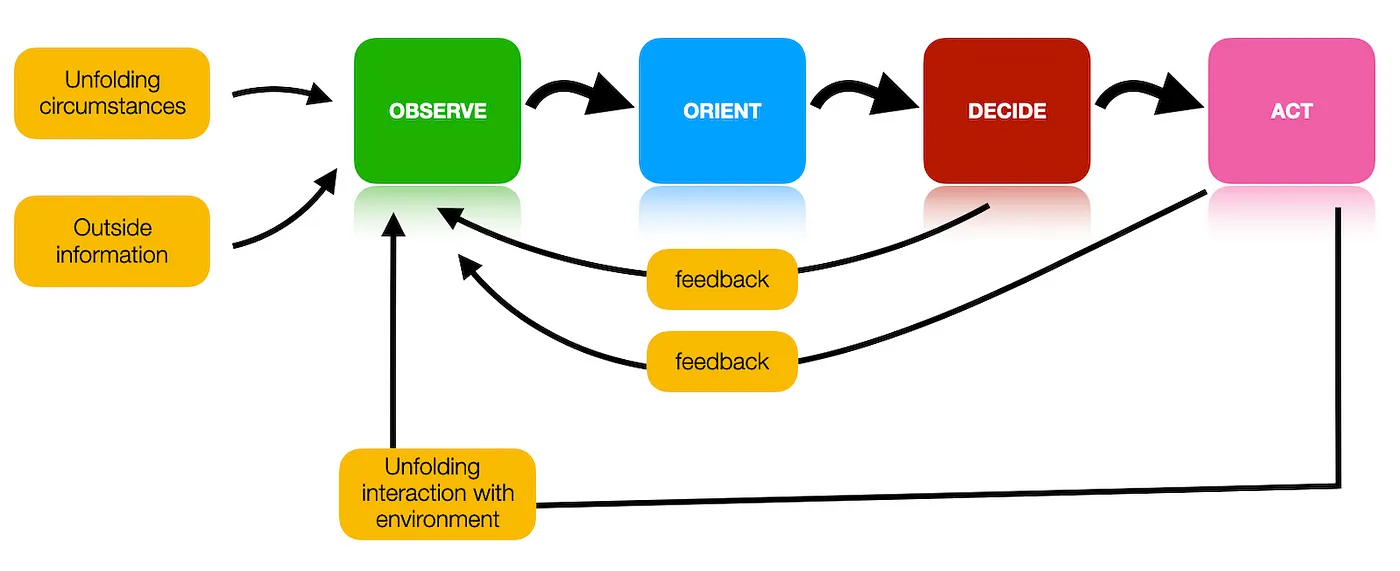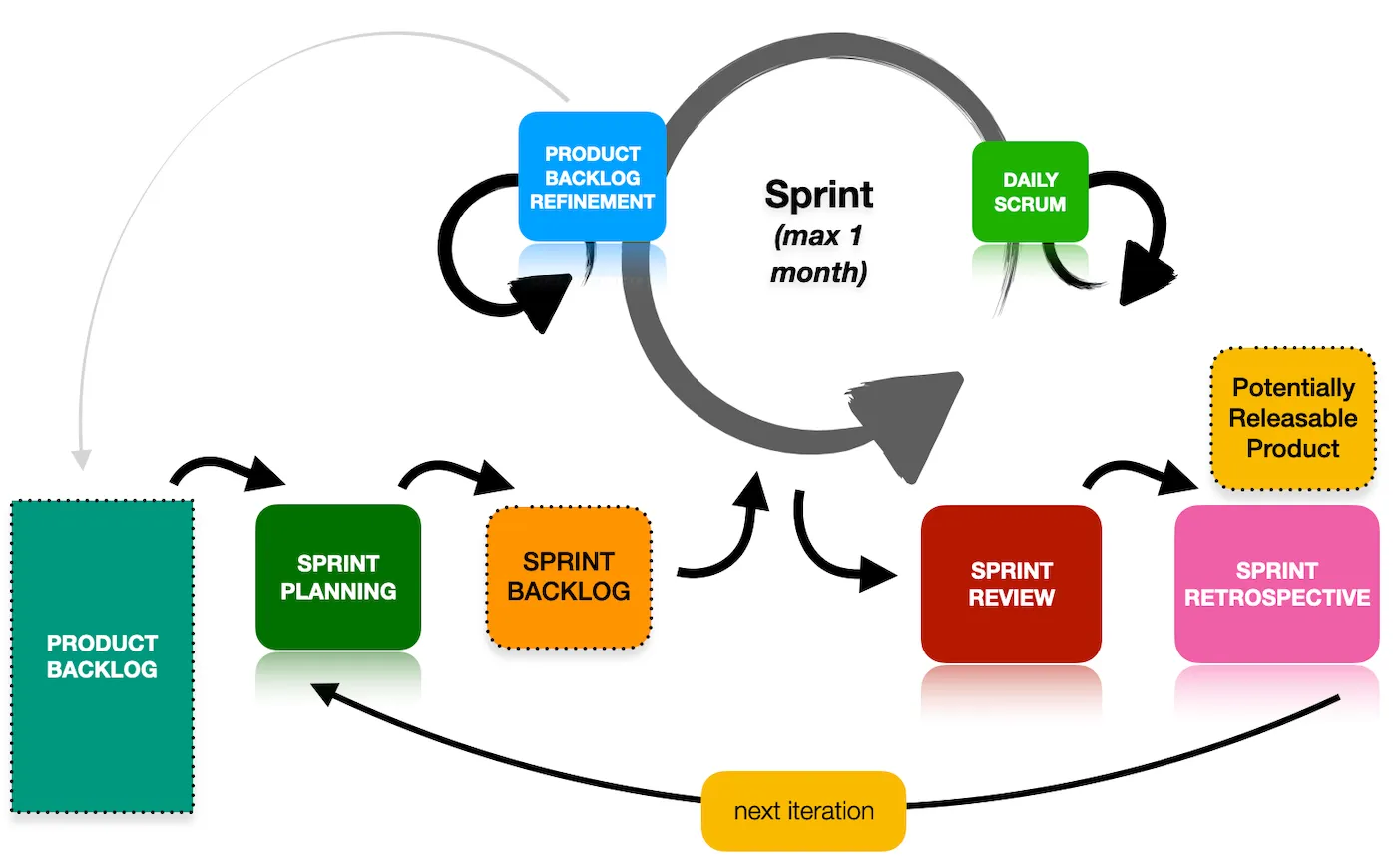Processes and teamwork - Models
This text is part of Processes and teamwork
Below are, in my opinion, two fundamental models that are worth implementing or using as a base to build something of your own if necessary. I’ll also mention Scrum, which is a relatively ‘modern implementation’ of the learning loop.
The early 1950s and W. Edwards Deming…
The PDCA Loop (Plan-Do-Check-Act), which promotes continuous process improvement and quality management, involves four steps:
- Plan: Identify a goal or needed change and plan how to implement it.
- Do: Execute the plan on a small scale to test its effectiveness.
- Check: Evaluate the results to see if the desired outcome was achieved.
- Act: Implement the change on a larger scale if successful, or refine and try again.
The 1960s and Colonel John Boyd…
The OODA Loop (Observe-Orient-Decide-Act) emphasises continuous adaptation and learning and is used to make quick, effective decisions in rapidly changing environments, allowing for constant feedback and adjustment:
- Observe: Gather information from the environment.
- Orient: Analyze the information and update your understanding.
- Decide: Choose a course of action based on the analysis.
- Act: Implement the decision.
The early 1990s and Ken Schwaber…
Scrum emerges as a framework for managing knowledge work. Dozens of books have been written about Scrum, and there are gigabytes of articles available online, so here I just want to highlight a few interesting elements.
First, several loops are introduced, each with a different cadence: a daily loop that repeats every 24 hours, another related to the length of the sprint (based on my observations, a 2-week sprint is the most commonly chosen) and a third loop related to the cyclical review and preparation of work (product backlog).
Each of these loops has a feedback element built in, serving both inspection and evaluation, while also consolidating the group in their pursuit of a common goal and providing an opportunity to learn from their own mistakes.
The daily loop — its main element is the standup, and it is critically important, especially for remote teams. Sometimes, it’s the only contact point during the day, the moment of live, face-to-face communication between team members. One of the mistakes teams often make is treating the standup as a meeting for reporting. Absolutely not!!! The status of the project, including who is working on what, should be visible in JIRA, Codebase, Asana, Trello, ClickUp, or whatever tool the team uses — remember, ‘Make Work Visible’. The standup is for the team, and its main purpose is really ‘commitments in front of peers’ — which is why it’s so important that these meetings are face-to-face. If that’s not physically possible, then they should be held via video conference.
The Sprint loop, with its precisely defined list of tasks (Sprint Backlog), is a classic example of time boxing. With clearly specified tasks and estimates, which are later reviewed against the actual outcomes at the end of the Sprint, only in this way can you attempt any predictions regarding the project’s future. There’s also, of course, a feedback element in the form of the Sprint Retrospective, where each team member should have the chance to share their opinion.
The loop related to Product Backlog Refinement (cyclical meetings) is the perfect place for sharing knowledge about the project. During these refinement sessions, team members often share knowledge about the project, discuss technical details, and collaborate to understand the requirements better. This makes it an excellent opportunity for team members to exchange insights and align on the project’s direction, ensuring everyone has a clear understanding of what needs to be done.
Here you’ll find the next part of this text.


